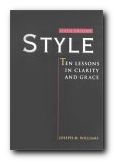A Plan for the Improvement of English Spelling
Spelling Reform was a much debated issue in the latter part of the nineteenth century and the early years of the twentieth. Various schemes were put forward for simplifying English spelling, which was thought to be difficult and obscure. These schemes often involved phonetic spelling, and some even went so far as proposing the creation of new alphabets. George Bernard Shaw funded one such scheme. A more recent example is Sayspel, devised by hydraulic engineer Roy Blain. None of these ideas came to anything – for very good reasons. This is also the period which gave rise to Esperanto, a totally artificial, invented language which nobody except enthusiasts actually speaks.
The famous short passage that follows is a satirical response to this idea attributed to the American humorist Mark Twain.
For example, in Year 1 that useless letter c would be dropped to be replased either by k or s, and likewise x would no longer be part of the alphabet. The only kase in which c would be retained would be the ch formation, which will be dealt with later.
Year 2 might reform w spelling, so that which and one would take the same konsonant, wile Year 3 might well abolish y replasing it with i and Iear 4 might fiks the g/j anomali wonse and for all.
Jenerally, then, the improvement would kontinue iear bai iear with Iear 5 doing awai with useless double konsonants, and Iears 6-12 or so modifaiing vowlz and the rimeining voist and unvoist konsonants.
Bai Iear 15 or sou, it wud fainali bi posibl tu meik ius ov thi ridandant letez c, y and x — bai now jast a memori in the maindz ov ould doderez — tu riplais ch, sh, and th rispektivli.
Fainali, xen, aafte sam 20 iers ov orxogrefkl riform, wi wud hev a lojikl, kohirnt speling in ius xrewawt xe Ingliy-spiking werld.
Mark Twain
More on language
More on literary studies
More on writing skills
More on creative writing
More on grammar
